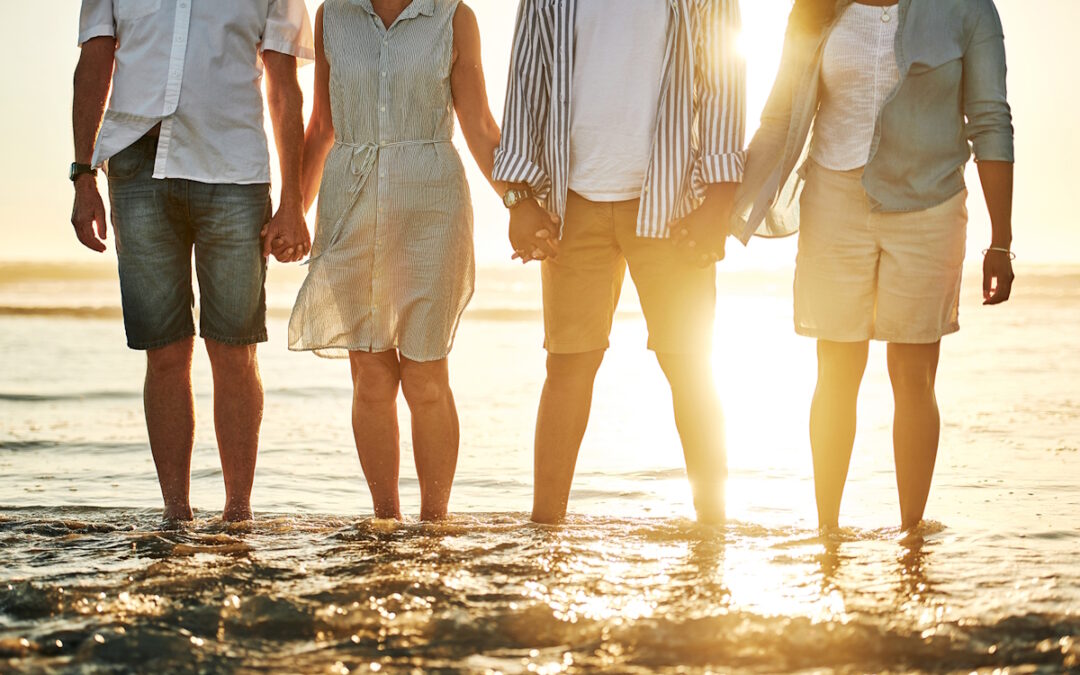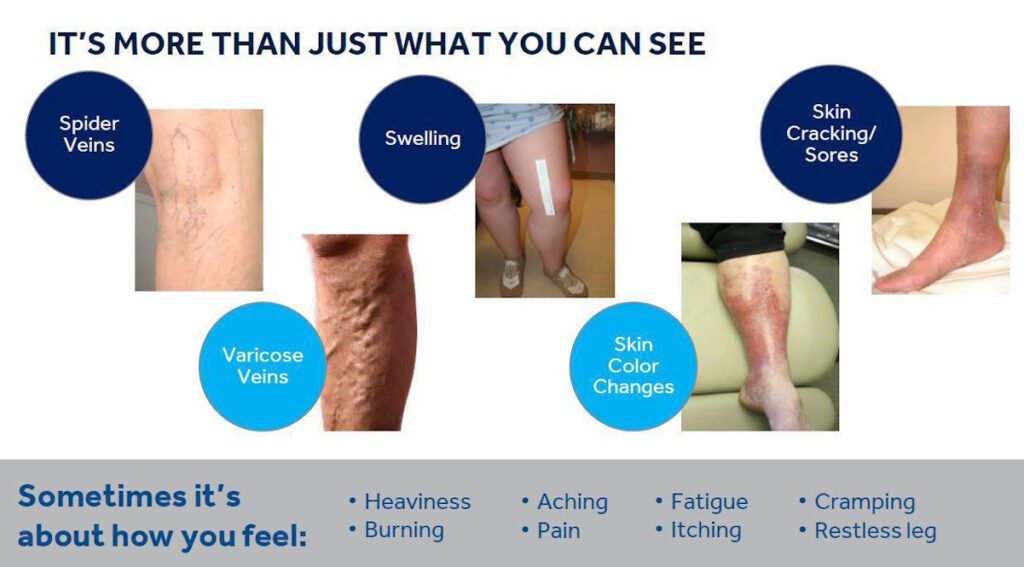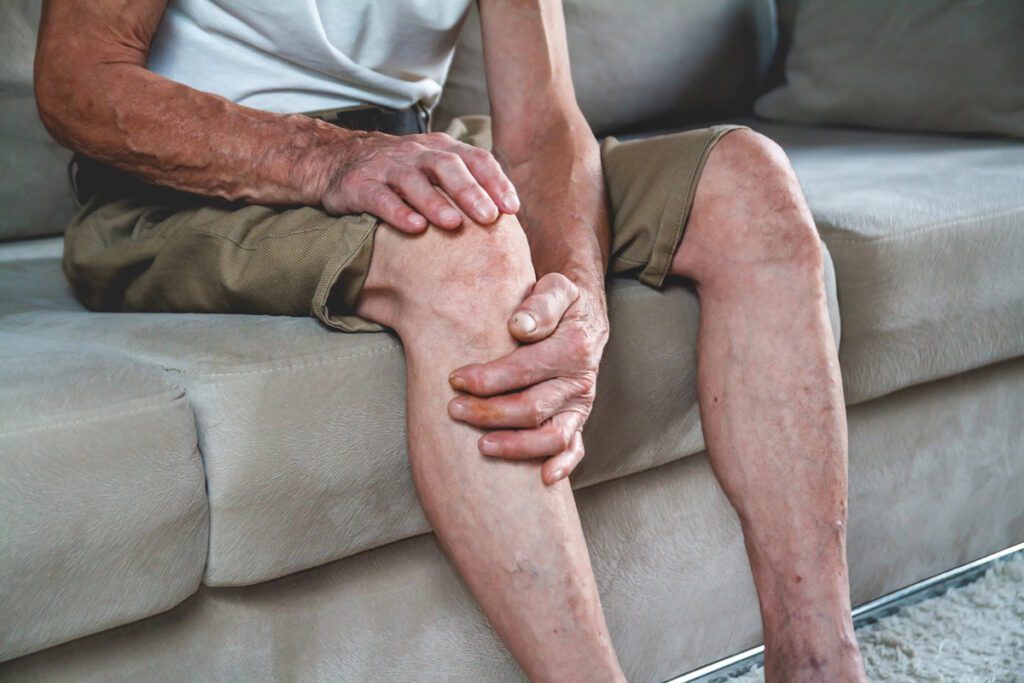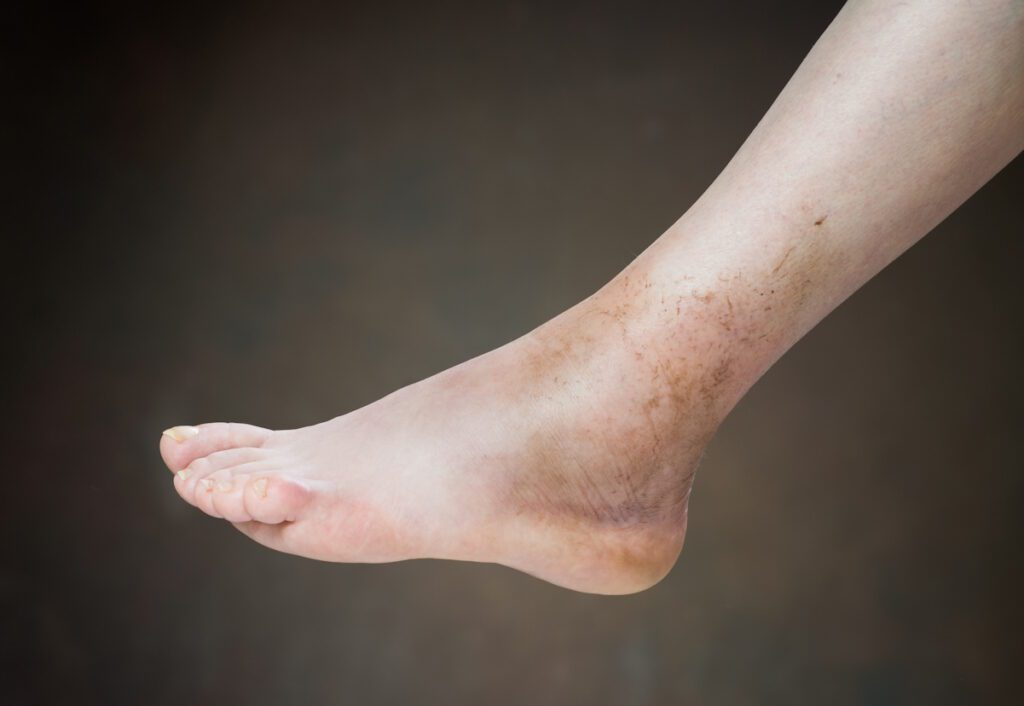5 Overlooked Symptoms of Vein Disease
Author: StrideCare Internal Team

How Do I Recognize Vein Disease Symptoms?

Overlooked Symptoms of Vein Disease
- Swelling
Leg or foot swelling isn’t always a cause for concern. It can be because of a recent injury or an allergic reaction to a bug bite or medication. If so, in time the swelling subsides. But that doesn’t mean all cases of leg swelling are harmless. Vein diseases such as chronic venous insufficiency could be the issue. This is especially true if your feet and ankles remain swollen or are accompanied by other symptoms such as:
- Unexplained pain or swelling
- Sudden or excessive swelling
- A feeling of heaviness in your legs or feet
- Skin that feels tight
- Deep indentations in your skin after taking off your socks or shoes
- Difficulty walking or immobility for long stretches
- Warmth, redness, or inflammation in the affected area
- Swelling that’s accompanied by a fever
- Skin color and texture changes on the feet
- Leg cramping
When your veins swell and enlarge, they can also become twisted and block the delivery of oxygen and nutrients to your muscles. As a result, your legs can cramp up and spasm. A common example of what many people have experienced in daily life is a Charley Horse cramp in their calf or lower leg. This is characterized as a sudden and violent muscle contraction where the muscles literally seize up and cause intense pain. The same can be true for leg cramping related to vein disease.

- Tingling, prickling, and itching sensations
Restless Leg Syndrome (RLS) is classified as a sleep disorder since it is best known for causing issues while a person is at rest—especially when sitting or lying down. But it is also a sign of vein disease. It can feel like pins and needles, itchiness, burning, numbness, aching, and muscle cramps that only improves or is eliminated with movement. Many physicians believe vein problems, including chronic lower extremity venous insufficiency, cause RLS since blood is not emptying out of the legs properly.
For many patients, moving one’s legs feels like the best way to pump blood back toward the heart. In a published study, patients saw an 80% improvement in RLS symptoms after treatment of venous insufficiency.
- Leg skin discoloration
This is another overlooked symptom of vein disease since people might think they have nothing more than a minor skin condition or allergic reaction that could be cleared up by seeing a dermatologist. While this could be true, leg discoloration can also occur when your veins can’t sufficiently pump blood back up to the heart like they’re supposed to. Swelling produces pressure and prevents adequate blood and oxygen from reaching the skin—leading to leg discoloration. According to the Mayo Clinic, there are more than 200,000 cases of leg discoloration, or venous stasis dermatitis, in the U.S. each year. It is usually a precursor to more problematic conditions such as venous ulcers, swelling, and other complications.

Below are a few common symptoms of leg skin discoloration caused by vein disease:
- Reddish or brown staining on lower legs
- Skin that looks yellow, brown, purple, or red
- Pain or swelling of the legs and ankles
- Skin that feels dry, scaly, itchy, flaky, or leathery
- Skin that’s warm to the touch
- Varicose veins
- General pain and throbbing
Legs and feet can feel tired and sore for many reasons, especially if you are on your feet all day or just finished up an intense workout at the gym. But if varicose veins also accompany pain and throbbing, this could be an overlooked sign of vein disease. Examples of the pain you might experience due to vein disease include pain near or on a varicose vein, muscle cramps, an achy or heavy feeling in the legs, and pain that worsens after sitting or standing for long periods. Many people assume varicose veins are an ugly fact of life and aren’t associated with pain. But this couldn’t be falser, especially during the advancing stages of vein disease.
StrideCare Is Your Vein Disease Expert!
It’s easy to overlook potential vein disease symptoms when you aren’t in pain or think the uncomfortable symptoms you are experiencing are the result of a more benign condition like general fatigue, an allergic reaction, or even due to medication you’re taking. The reality is that spider and varicose veins are only a small piece to a much large vein disease issue, and there are common symptoms you may be overlooking right now.
The good news is that help isn’t far away. The team of specialists at StrideCare are on the cutting-edge of medicine, helping patients avoid traditionally long invasive surgeries used in the past to treat a variety of conditions to relieve them of their underlying vein disease issues. Procedures take place at in-office or outpatient settings. Patients suffering from a multitude of vascular conditions that include venous insufficiency, varicose veins, spider veins, diabetic vascular disease, venous ulcers, peripheral artery disease, leg discoloration, lymphedema, restless legs syndrome, and more can benefit from these minimally invasive treatments.
StrideCare’s experts are leaders in advanced techniques and treatment to help prevent conditions that reduce quality of life. They create comprehensive artery and vein treatment plans that look beyond only cosmetic problems to detect underlying complications.
Prior to starting any new treatment or questions regarding a medical condition, always seek the advice of your doctor or other qualified health provider. This information is not a substitute for professional medical advice.
StrideCare serves the South Texas area including Houston, San Antonio, Austin, Round Rock, Bastrop, Brushy Creek, Cedar Park, Converse, Georgetown, Hutto, Kyle, Leander, Marble Falls, New Braunfels, Pasadena, Pearland, Pflugerville, San Marcos, Schertz, Houston, Sugar Land, Katy, Webster, Bay City, Clear Lake, Lake Jackson, The Woodlands, Universal City, Spring, Kingwood, Stafford, Conroe, Texas City, Cypress, League City, Bellaire, and more.


